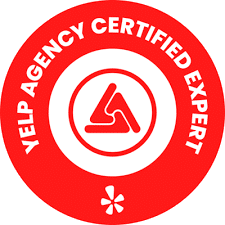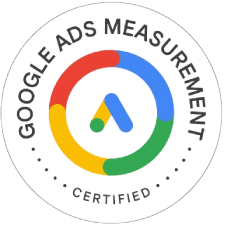In today’s digital-first world, your website is more than just an online brochure—it is the hub of your business identity, brand message, and marketing efforts. The way a website looks, feels, and functions directly impacts how search engines rank it and how visitors perceive your business. While many companies focus on search engine optimization (SEO) through keywords, backlinks, and content, they often overlook one of the most powerful SEO factors: website design.
A well-designed website does more than appeal to the eye; it creates a seamless experience for visitors, encourages engagement, and sends strong signals to search engines about the site’s quality. In short, website design is not separate from SEO marketing—it is an integral part of it.
This article will explore the relationship between website design and SEO marketing, discuss the key design elements that improve rankings, and explain why businesses that prioritize design see better ROI from their digital marketing campaigns.
Why Website Design Matters for SEO
Search engines like Google and Bing are in the business of delivering the most relevant and accurate results to users. When a user clicks on a search result, they expect a fast-loading, easy-to-navigate, and applicable website. If your website design fails to meet these expectations, visitors leave quickly—and search engines notice.
Here are the main reasons why design and SEO are interconnected:
-
First Impressions Count – A poorly designed website creates a negative impression, which increases bounce rates. High bounce rates signal to search engines that your website may not offer value, which can lead to lower rankings.
-
User Experience (UX) and SEO Alignment – Google’s algorithms prioritize user experience. If users stay longer on your site and interact with multiple pages, it signals relevance and quality, which boosts your rankings.
-
Mobile Responsiveness – With Google’s mobile-first indexing, mobile-friendly design is no longer optional—it is mandatory. A responsive design ensures accessibility across all devices, directly improving SEO.
-
Site Speed and Performance – Slow websites frustrate users and negatively impact their ranking in search results. Design choices—such as large images, excessive animations, or poorly structured code—can significantly impact site speed.
-
Content Presentation – Good design makes content easy to read, structured with proper headings, and supported by visuals. This improves on-page SEO and keeps visitors engaged longer.
The Role of User Experience in SEO Marketing
User experience (UX) is at the heart of effective website design and SEO. A site that provides an intuitive journey from the homepage to conversion points helps both users and search engines understand its value.
Navigation and Structure
A clear, logical site structure not only helps users find information but also assists search engines in crawling and indexing your site. Well-placed menus, breadcrumbs, and internal links create a hierarchy that enhances SEO visibility.
Visual Appeal and Engagement
Modern design is not just about colors and fonts—it’s about storytelling. A visually engaging site draws users in, keeps them interested, and reduces bounce rates. When paired with SEO-rich content, design amplifies your message.
Accessibility and Inclusivity
Search engines reward websites that are accessible to all users, including those with disabilities. Features such as alt text for images, keyboard navigation, and precise contrast ratios enhance both usability and SEO performance.
Mobile-First Design and SEO
More than half of all web traffic today comes from mobile devices. In response, Google introduced mobile-first indexing, which means that the mobile version of your site is the primary version used for ranking.

Importance of Mobile Responsiveness
-
Adaptive Layouts – A responsive design ensures your website automatically adjusts to different screen sizes without breaking the user experience.
-
Touch-Friendly Navigation – Buttons, menus, and forms must be easy to use on smaller screens.
-
Optimized Mobile Speed – Since mobile users often rely on slower connections, a lightweight design and optimized media are essential.
Ignoring mobile-first design can lead to poor rankings, reduced engagement, and missed revenue opportunities.
Website Speed as a Ranking Factor
Page speed is a confirmed ranking factor in Google’s algorithm. Studies show that even a one-second delay in page load time can result in:
-
11% fewer page views,
-
16% decrease in customer satisfaction, and
-
7% loss in conversions.
Factors Affecting Site Speed
-
Large image files
-
Unoptimized code (JavaScript, CSS)
-
Excessive plugins or widgets
-
Slow hosting servers
By integrating design with technical SEO practices, businesses can achieve lightning-fast websites that enhance user experience and improve rankings.
Design and Content Synergy
SEO relies heavily on content, but design dictates how that content is consumed. A blog post may be keyword-optimized, but if the font is too small, the layout is cluttered, or the paragraphs are overwhelming, users will abandon it.
Best Practices for Design-Content Integration
-
Use clear headings (H1, H2, H3) with keyword alignment.
-
Incorporate visual elements (images, infographics, videos) to break up text.
-
Design call-to-action (CTA) placements that guide users toward conversions.
-
Ensure consistent branding across all pages to build trust and recognition.
When design and content work together, SEO outcomes improve exponentially.
The Impact of Design on Conversion Rates
SEO is not just about traffic; it’s about converting visitors into customers. A well-designed website maximizes conversion opportunities by guiding users through a deliberate and intentional journey.
Key Conversion-Driven Design Elements
-
Clear CTAs – Strategically placed buttons that are visually distinct.
-
Trust Signals – Testimonials, reviews, certifications, and secure payment badges.
-
Landing Page Optimization – Focused design that removes distractions and highlights offers.
-
Consistent Branding – Ensures familiarity, builds trust, and reinforces credibility.
Conversion Rate Optimization (CRO) is an extension of SEO marketing. Without strong design, even the best SEO campaigns will fail to deliver ROI.
Technical Design and SEO Alignment
Beyond aesthetics, technical aspects of website design play a critical role in SEO performance.

Schema Markup
Design and coding should integrate schema markup, which helps search engines better understand your content and display rich snippets in search results.
Internal Linking Strategy
Design should encourage internal linking through menus, sidebars, and contextual links within content. This improves crawlability and distributes link equity.
Secure and Reliable Hosting
A secure (HTTPS) website is not only a trust factor for visitors but also a ranking signal for Google. Website architecture must support security and stability.
Common Design Mistakes That Hurt SEO
While good design boosts SEO, poor design can undo months of optimization efforts. Some common pitfalls include:
-
Flash or Heavy Animations – Slow down the site and prevent indexing.
-
Image-Only Content – Search engines cannot read text embedded in images.
-
Intrusive Pop-Ups – Harm user experience and lead to penalties.
-
Thin Content Layouts – Pages with little substance or repetitive design elements.
-
Poor Mobile Experience – Non-responsive layouts hurt rankings.
Avoiding these mistakes ensures that your design complements rather than hinders your SEO strategy.
The Future of Website Design and SEO
As search engines evolve, so too must website design. Artificial intelligence (AI), voice search, and new devices are transforming the way users interact with websites.
-
Voice Search Optimization – Design must adapt to conversational search queries with concise, scannable content.
-
AI-Powered Personalization – Websites will increasingly utilize AI to deliver personalized experiences that enhance user engagement.
-
Core Web Vitals – Google continues to refine metrics such as Largest Contentful Paint (LCP) and Cumulative Layout Shift (CLS), which directly tie into design and performance.
Staying ahead of these trends ensures long-term visibility and competitiveness.
Why Professional Website Design and SEO Go Hand-in-Hand
Many businesses make the mistake of hiring separate providers for SEO and website design, leading to misalignment. For true digital success, you need a team that understands how design decisions affect rankings, traffic, and conversions.
A professional approach ensures:
-
Cohesion between branding, content, and technical SEO.
-
Continuous optimization as search algorithms evolve.
-
Improved ROI through higher visibility and conversion rates.
Final Thoughts: How to Leverage Website Design for SEO Success
Website design is not just an artistic endeavor—it is a marketing strategy. Every design choice, from color schemes to page layouts, impacts SEO performance. Businesses that prioritize design as part of their SEO marketing see more substantial rankings, better engagement, and higher conversions.
To succeed in today’s competitive digital environment, businesses must embrace a design-first SEO strategy that combines aesthetics, usability, and technical optimization.

Why Partner with Search Engine Projects
If you are ready to take your website design and SEO marketing to the next level, you need a partner who understands how to integrate the two seamlessly. Search Engine Projects specializes in building websites that are not only visually appealing but also SEO-optimized for maximum online visibility.
With years of experience in digital marketing, web development, and SEO strategy, Search Engine Projects ensures that your website becomes a powerful tool for attracting customers, enhancing rankings, and driving business growth. From responsive design and site speed optimization to content integration and conversion-focused layouts, their team delivers solutions tailored to your unique goals.
Website design and SEO are no longer separate strategies—they are two sides of the same coin. Partnering with Search Engine Projects ensures that your business stays ahead of the competition and achieves measurable online success.













